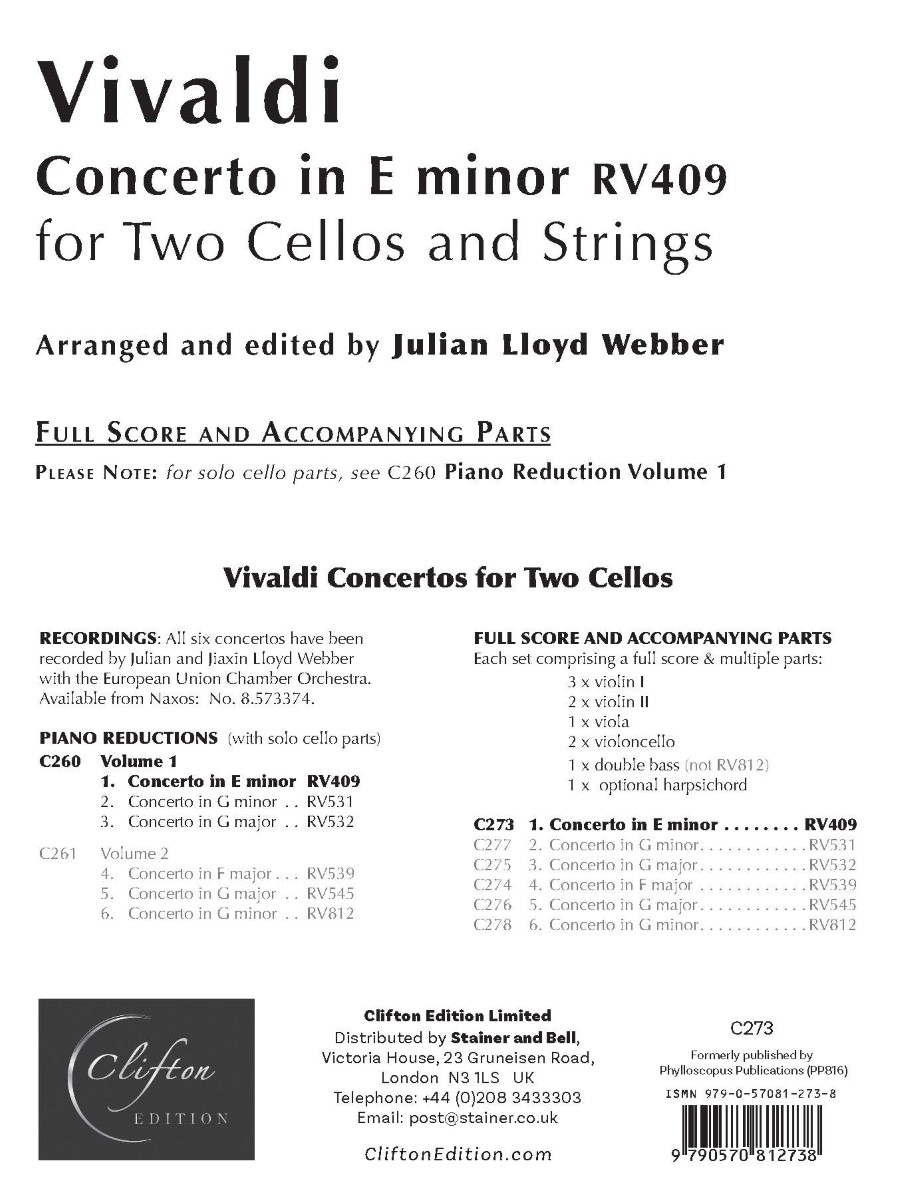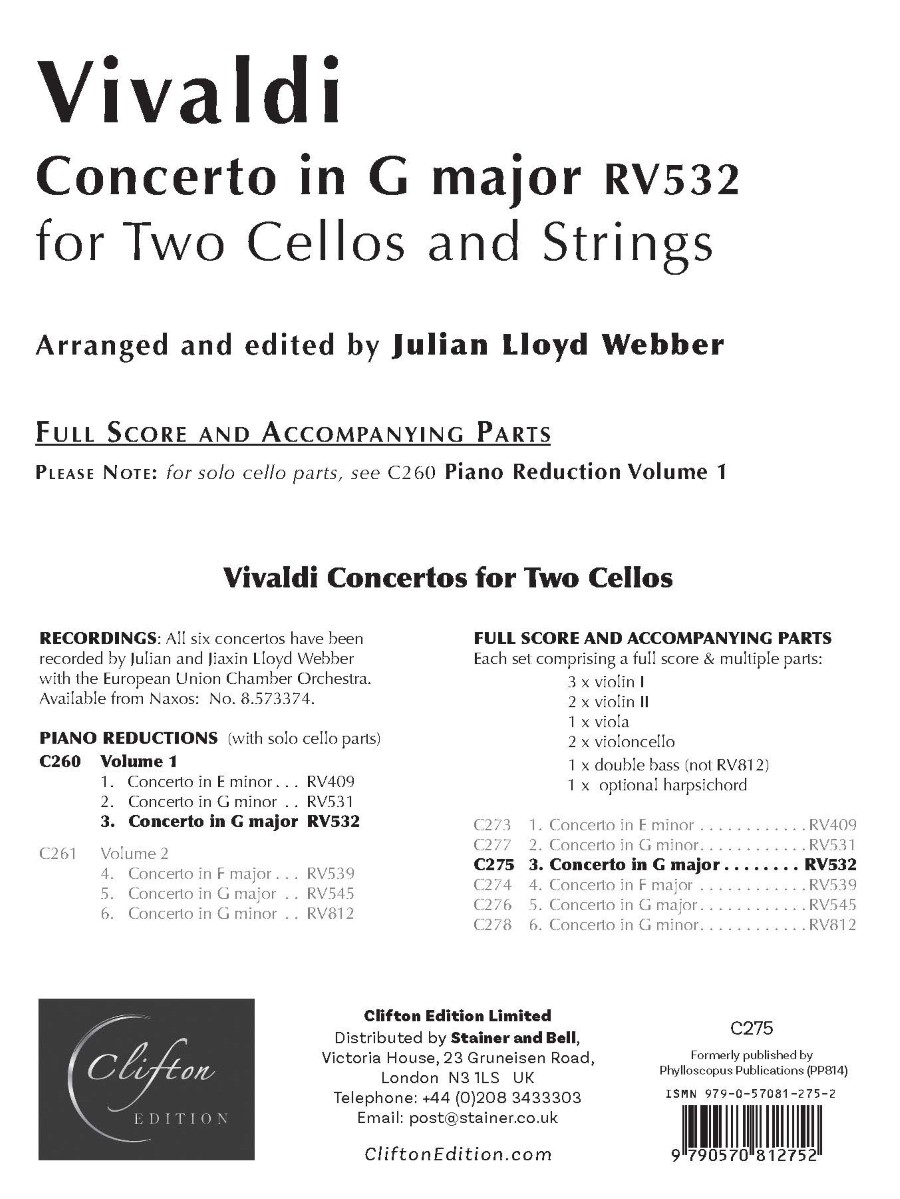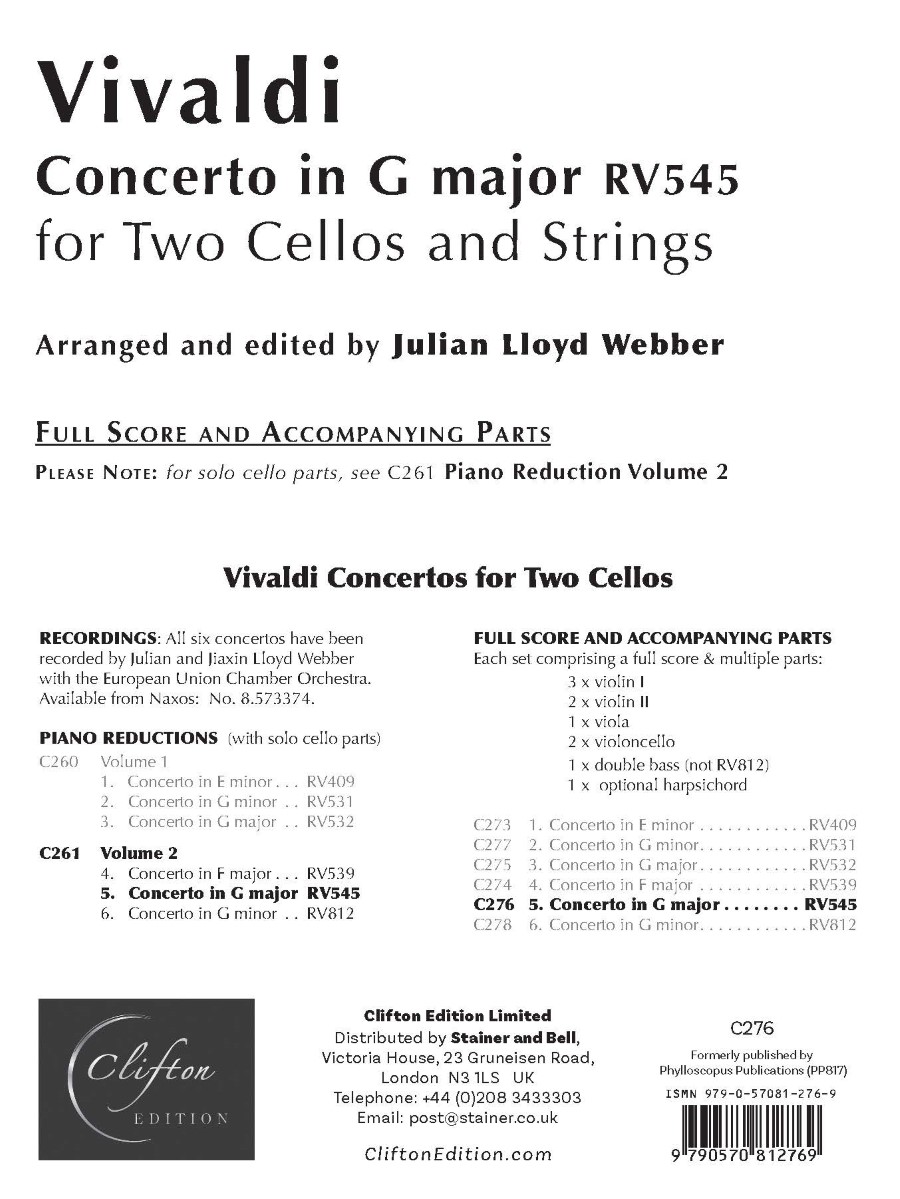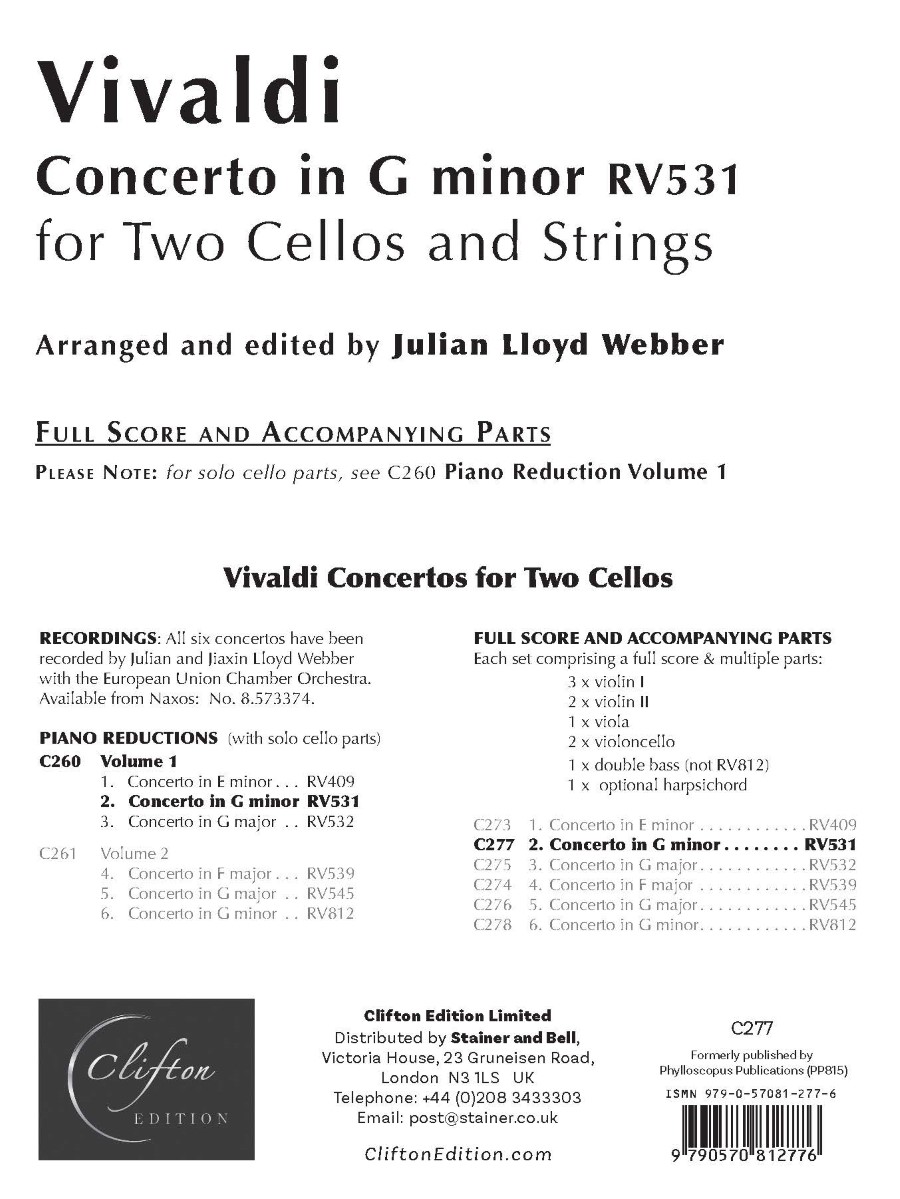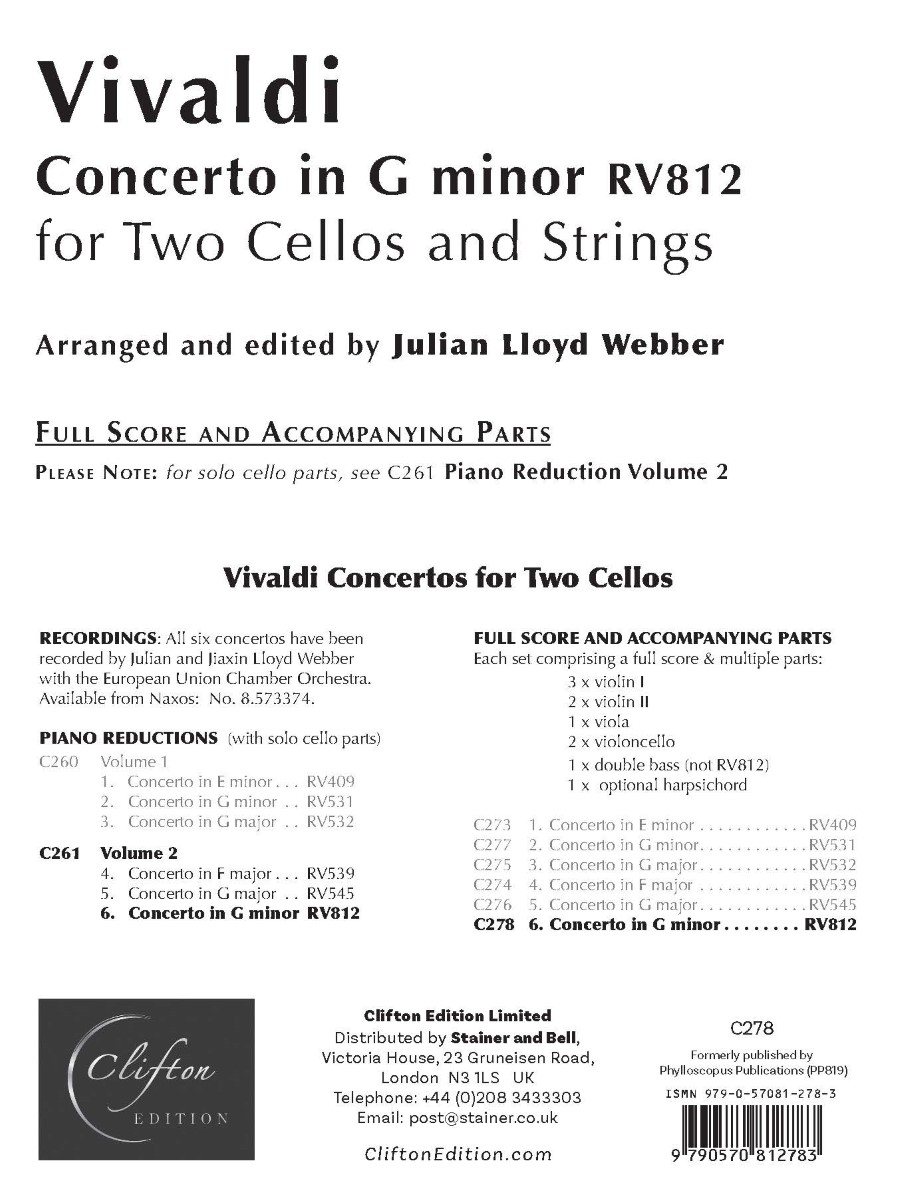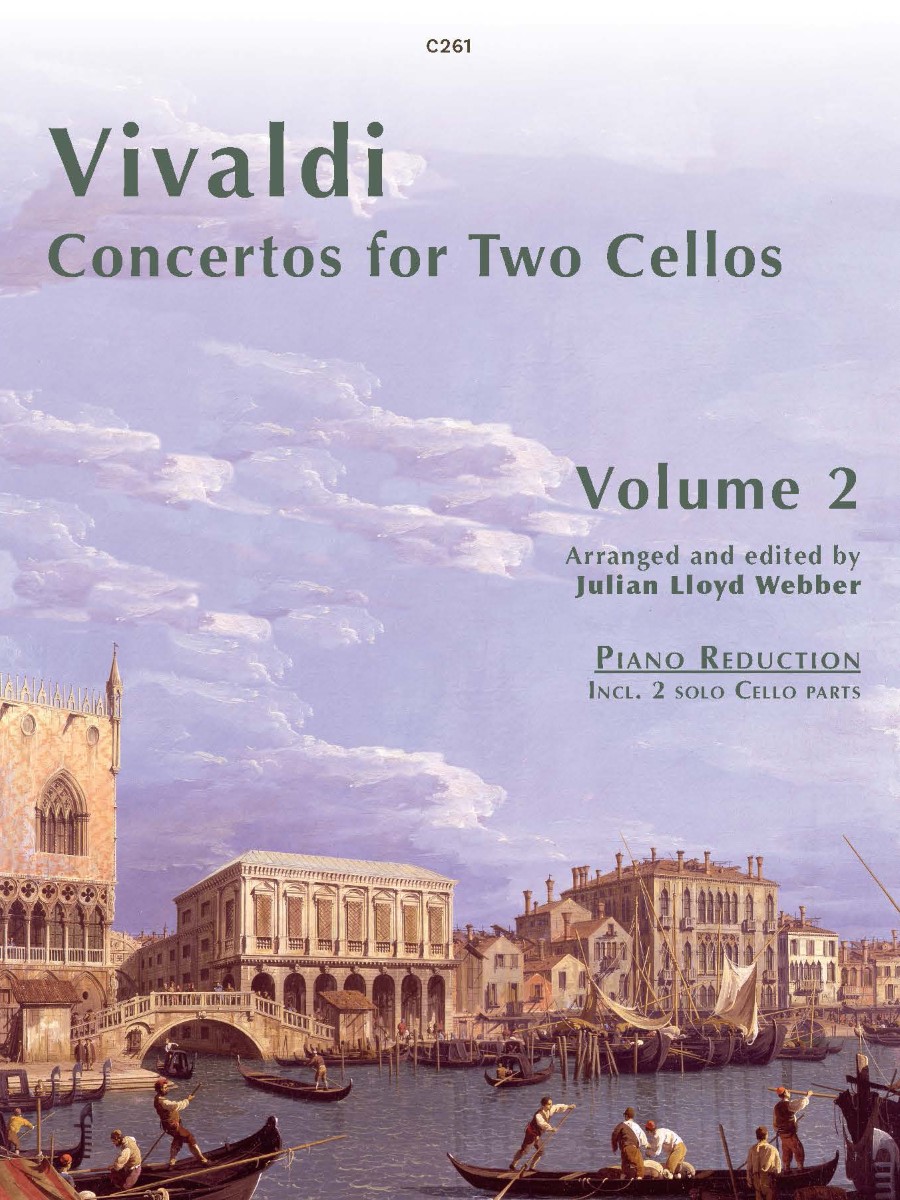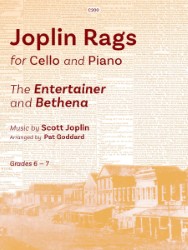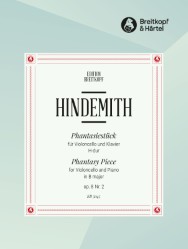Concertos for Two Cellos Volume 1, RV409, RV531 & RV532
Piano Reduction with solo cello parts
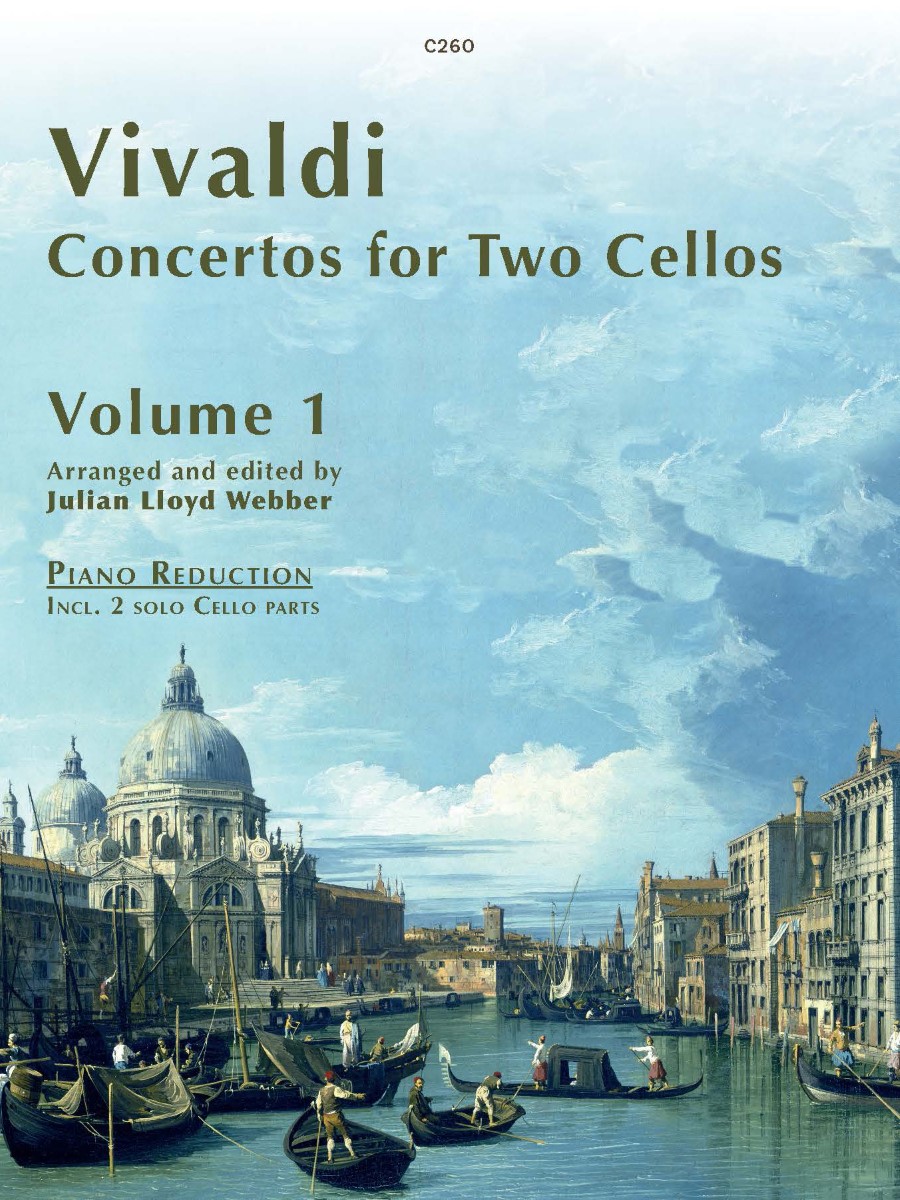
Composer: Vivaldi, Antonio
Arranger: Julian Lloyd Webber
Editor: Julian Lloyd Webber
Arranged for: 2 Cellos and Piano
Publisher:
| Product Code: | 979-0-570-81260-8 |
| ISMN: | 979-0-570-81260-8 |
| Publishers Number: | C260D |
| Series: | Vivaldi Double Cello Concertos |
| Difficulty: | Grades 6 – 8 |
| Published date:: | 20230912 |
| Language: | English |
| Page count: | 68 |
| Condition: | New |
2. Concerto in G minor RV531
3. Concerto in G Major RV532
Vivaldi’s early life was marked by his musical talent, which was evident from a young age. He began studying for the priesthood at the age of 15 and was ordained at 25. However, due to a health problem, he was given dispensation to no longer say public Masses.
Throughout his career, Vivaldi composed over 500 concertos, more than 40 operas, and numerous sacred choral works. Many of his compositions were written for the all-female music ensemble of the Ospedale della Pietà, a home for abandoned children in Venice.
Vivaldi’s influence during his lifetime was widespread across Europe, giving origin to many imitators and admirers. He pioneered developments in orchestration, violin technique, and programmatic music. Despite his success during his lifetime, Vivaldi died in poverty in Vienna on July 28, 1741.
After almost two centuries of decline, Vivaldi’s musical reputation underwent a revival in the early 20th century. Many of his compositions, once thought lost, have been rediscovered and continue to be performed and celebrated today.
Vivaldi Concertos for Two Cellos Volume 1 contains RV409, RV531 & RV532.
Vivaldi Concerto in E minor RV409:This Concerto was originally composed for Bassoon, Cello, Strings…
Vivaldi Concerto in E minor RV409:This Concerto was originally composed for Bassoon, Cello, Strings and continuo, and has been arranged for two Cellos by Julian Lloyd Webber
It is a fascinating and somewhat unconventional work in his cello concerto repertoire and showcases Vivaldi’s flair for dramatic contrasts and inventive textures.
The concerto follows the typical three-movement Baroque format:
Movement 1: Adagio – Allegro molto: Begins with a solemn Adagio, quickly shifting into a vigorous Allegro.
Movement 2: Allegro – Adagio: Reverses the pattern: energetic solo passages marked Allegro, interrupted by brief Adagio ritornellos. This inversion creates a playful tension between soloist and ensemble.
Movement 3: Allegro: A lively finale in ritornello form, with recurring orchestral themes framing virtuosic cello episodes.
Vivaldi rarely ventures above fourth position on the cello, keeping the technical demands accessible but expressive.
Vivaldi Concerto in G minor RV531 is a striking and rare gem in his catalogue as it is the only concerto he wrote for two cellos. Composed in the 1720s, it’s a bold departure from convention and a showcase of expressive depth.
The concerto follows the standard three-movement format:
Movement 1: Allegro: Begins unusually with the two solo cellos alone, imitating each other in rapid succession. There is no orchestral ritornello at the start making for an opening which is both dramatic and intimate. The cellos often play in parallel thirds, creating a rich, dark sonority.
Movement 2: Largo: A slow, mournful trio between the two soloists and continuo, which musicologist Michael Talbot described it as having “almost autobiographical sadness.”
Movement 3: Allegro: Opens with syncopated orchestral rhythms and features a fugal section initiated by the second cello. It is energetic and emotionally charged, with rhythmic instability that adds tension.
This is an equal opportunity concerto with both cellos are treated as equals, not soloist and accompanist. The absence of upper strings in key passages emphasizes the deep, resonant timbre, and the concerto is full of expressive contrasts; from lyrical sorrow to frenetic joy, the emotional range is vast.
Vivaldi Concerto in G Major RV532 is a delightful gem from the Baroque era. Originally composed for two mandolins, strings, and continuo, it has been arranged for 2 guitars, and in this instance 2 cellos. It’s one of the few concertos Vivaldi wrote featuring mandolins, and it showcases his flair for lively dialogue between solo instruments.
Movement 1: Allegro: Bright and energetic, full of playful exchanges between the instruments.
Movement 2: Andante – A lyrical and expressive middle movement in E minor
Movement 3: Allegro – A spirited finale that brings the piece to a joyful close
Vivaldi’s signature rhythmic vitality and melodic charm are very evident in this dazzlingly lively work.
About Julian Lloyd Webber
Julian Lloyd Webber is described by Strad magazine as ‘the doyen of British cellists’ and is widely regarded as one of the finest musicians of his generation. He enjoys one of the most creative and successful careers in classical music today. As founder of the British Government’s In Harmony programme and the Chair of Sistema England, he continues to promote personal and community development in some of England’s most deprived areas.
At the age of sixteen Julian Lloyd Webber won a scholarship to the Royal College of Music and he completed his studies in Geneva with the renowned cellist, Pierre Fournier. Since then he has collaborated with an extraordinary array of musicians from Lord Yehudi Menuhin, Lorin Maazel and Sir Georg Solti to Elton John and Stéphane Grappelli.
J
ulian Lloyd Webber has premiered more than sixty works for cello and he has inspired new compositions from composers as diverse as Joaquin Rodrigo and Sir Malcolm Arnold to Philip Glass, James MacMillan and Eric Whitacre. He has also recorded several highly successful CDs including Cello Song, Unexpected Songs and — together with his wife Jiaxin — A Tale of Two Cellos. His recording of Elgar’s Cello Concerto was chosen as “the finest ever” by BBC Music Magazine and he has also recorded concertos by Dvořák, Saint-Saëns, Lalo, Rodrigo and Philip Glass among many others.
Previous Publisher: Phylloscopus Publications PP824, PP825, PP826
A recording, featuring Julian Lloyd Webber, is now available from Naxos: CD cat. No. 8573374.
The “RV” number stands for Ryom Verzeichnis. RV numbers are one of the standard cataloguing systems for Vivaldi’s music and was created by Danish musicologist Peter Ryom. Verzeichnis is the German word for catalogue.
R.R.P £19.50
Our Price: £16.58
Digital Download – PDF
Shipping costs: No shipping
Other books in this series
You might also like
-
2 Joplin Rags for Cello and Piano
£8.08 -
2 Pieces for Cello and Piano
£16.00 -
2 Pieces Op. 5
£14.00 -
3 Pieces for Violoncello and Piano Op. 8
£15.00

